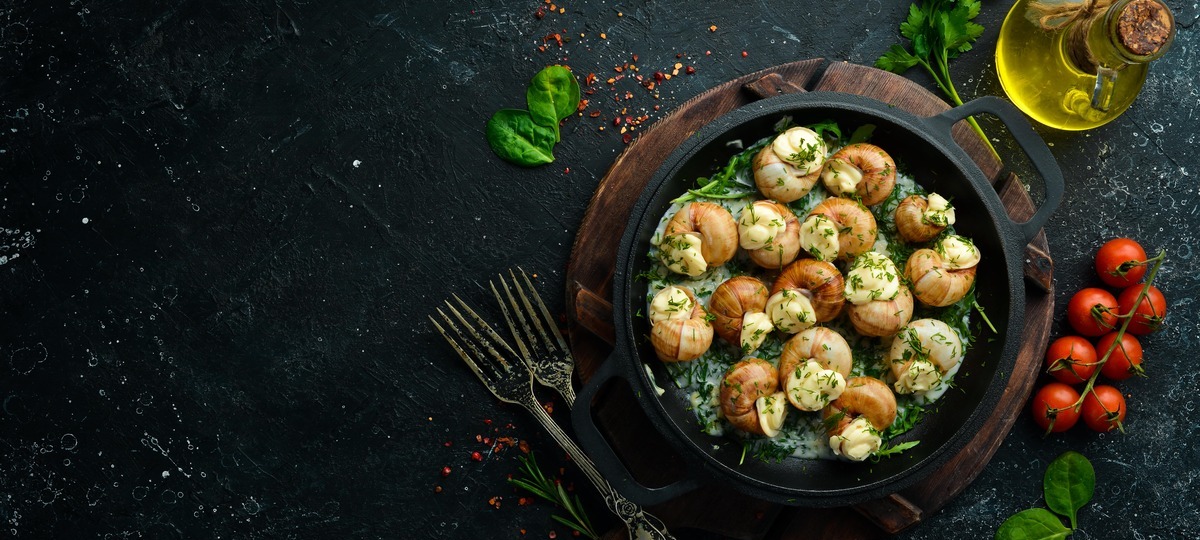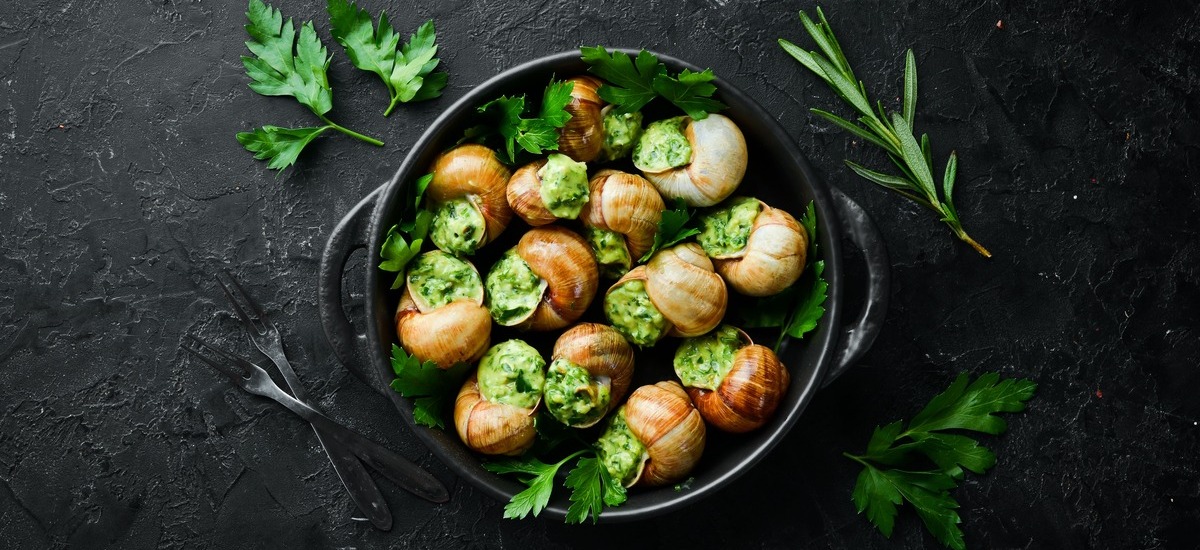A Delicious French Delicacy: Escargots
Category : Food Stories, Party Ideas, Recipes, Press Room |
Posted : Sep 6, 2022
Escargots, The word conjures up images of a luxurious French meal, enjoyed by the elite and wealthy. But what are escargots, exactly? And where did this delicacy come from? Escargots are small snails that are often served as an appetizer in French cuisine. They have a delicate flavor and are considered a delicacy in France. In this blog post, we will explore the history of escargots and learn more about what makes them such a popular dish!

History of Escargot
The word "Escargot" is initially adapted from the old French text which means "Scarab".
Escargots have been consumed in many parts of the world for centuries. The first recorded escargot dish was served in France during the reign of King Louis XIV. People have been consuming snails since prehistoric times. It was known as snail farming. Even though the delicacy is known to France, the first sighting was in Spain. There was an abundance of these species in the French countryside and became staple meat for the survival and adaptation amongst the French.
The popularity of the snail grew in France and continues to persist in the modern era. Escargot is frequently served as an introduction in France.
Harvesting, Processing & Nutritional Value of Escargot
Harvesting escargots is a delicate process that must be done with great care. The creatures are very sensitive to their environment and can easily be injured or killed if not handled properly. Once they are harvested, the escargots are then processed. This usually involves cleaning them and cooking them to prepare them for consumption. Some people also choose to can or pickle their escargots, which ensures that they will last longer and be easier to store. No matter how you choose to process your escargots, make sure that you do so with care to get the best results.
Escargot is a good source of protein and minerals, including magnesium, iron, zinc, and calcium. It also contains a significant amount of vitamin B12. Each of these nutrients is key for staying healthy. Escargot is a fantastic source of lean protein because they are almost completely free of fat, carbohydrates, and sugar. They are abundant in potassium, phosphorus, and selenium. Snails, like other mollusks, are a good source of tryptophan, an amino acid that aids in the production of serotonin in the brain. While escargot is not a common food in the United States, it can be found in some specialty stores or online.
The Unknown Differences between Snails & Escargots
Have you ever wondered what the difference is between a snail and escargot? If so, you're not alone. While both creatures are similar in many ways, some key differences set them apart. Here's a closer look at the unknown differences between snails and escargots.
Let's start by discussing their physical appearance. Snails are typically smaller than escargots, and they also have a harder shell. Escargots, on the other hand, have a softer shell that's easier to penetrate. When it comes to diet, snails are mostly herbivores while escargots are omnivores.

Snails can be found in a variety of climates, including cold and wet environments. Escargots, on the other hand, are typically found in warm climates. Escargots are almost always cooked before they're eaten, whereas snails can be eaten raw if they're properly cleaned. Escargots are also usually prepared with their shells still intact, which provides a nice little built-in handle for eating them. Finally, escargots are typically served with some kind of sauce or dip, whereas snails are often eaten plain.
The Traditional Way of Eating the Delicacy
Escargot de Bourgogne

Ingredients:
-24 large snails, preferably from Burgundy
-½ cup (120 ml) dry white wine
-A few sprigs of fresh parsley, thyme, and/or tarragon
-Kosher salt and freshly ground black pepper
-½ cup (120 ml) olive oil
-½ cup (120 ml) all-purpose flour
-½ teaspoon (about two turns of the pan) cayenne pepper
-¼ cup (60 ml) unsalted butter
-12 garlic cloves, peeled and thinly sliced
-⅓ cup (80 ml) Cognac or brandy
Instructions:
- Heat the oven to 350°F (175°C).
-Clean the snails: Using a small, sharp knife, remove the top of the snail shell (the "operculum"), just behind the head. Rinse the snail bodies and shells thoroughly under cold running water. Drain well.
-In a small bowl, combine the wine, parsley, thyme, tarragon, and salt and pepper to taste.
-Place the snail shells in a single layer on a baking sheet. Divide the herb mixture evenly among the shells, then drizzle with olive oil. Bake for about 15 minutes, or until the shells are dry and slightly opened.
-Meanwhile, in a shallow bowl, combine the flour, cayenne pepper, and salt and pepper to taste.
-In a large frying over medium heat, melt the butter. Toss in the garlic and sauté for 30 seconds or until it becomes fragrant. Add the Cognac or brandy and bring to a boil.
-Reduce the heat to low and simmer for about 30 seconds, or until the alcohol has evaporated.
-Add the snails and toss to coat with the butter mixture.
-Increase the heat to medium and cook for about two minutes, or until heated through.
-Using a slotted spoon, transfer the snails to the prepared baking sheet.
-Bake for about five minutes, or until the snails are very hot.
-Serve immediately with the garlic butter sauce. Enjoy!
If you're looking for a unique and delicious culinary experience, look no further than escargot. This French delicacy is sure to please your taste buds. So next time you're in the mood for something different, give escargot a try! You won't be disappointed. Learn about another French Delicacy like Duck Confit for a change in taste, recipes, and information!













